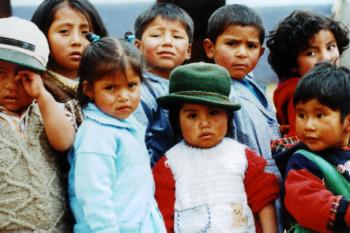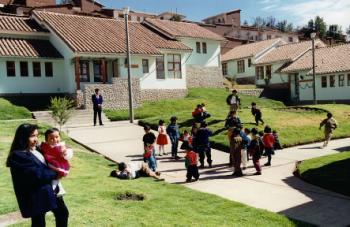Tourist wealth does not trickle down to the poorest sectors of society

Cuzco is located in the Peruvian Andes highlands at an altitude of 3,399 m and was once the capital of the Inca Empire. It is the starting point for visits to the famous Inca city of Machu Picchu, and almost two million tourists pass through Cuzco every year.
Over the last 20 years its population has almost tripled to a current 390,000 inhabitants approximately. Attracted by the wealth that tourists from all over the world bring to the city, many indigenous families from the surrounding impoverished rural areas give up their traditional lifestyle and come here in search of opportunity.
This intensive economic migration has led to the rapid expansion of slums on the city’s periphery. These settlements are built in high-risk areas where torrential rains and earthquakes are always a potential threat to their safety, and running water and sanitation are not available. This in turn leads to severe health hazards and environmental problems.
Indigenous population excluded from economic processes
To this day, over 80 per cent of the Peruvian population speak Spanish – those who speak native languages such as Quechua or Aymara are often excluded from formal education and thus from economic processes. Generally, they hold no qualifications and only have access to informal work, for example as porters or muleteers, or selling artisan crafts and jewellery on the streets. For these families and their children, it is a precarious life: competition is tough and they are exposed to mistreatment and exploitation on the streets.
Despite the Peruvian government’s efforts to eradicate the worst forms of child labour, in Cuzco it remains a highly visible problem, with even very young children offering their services as tourist guides, or selling goods in the streets late into the night.
While tourism is on the rise in the region, paradoxically so are levels of extreme poverty. Over 30 per cent of children under the age of 16 are chronically malnourished or living in extreme poverty.
What we do in Cuzco

SOS Children’s Villages began its work in Cuzco in 1993. The SOS Social Centres here offer a family strengthening programme, which aims to alleviate hardship and thereby prevent children from being abandoned. The family strengthening programme is organised and run by the community itself, with SOS Children’s Villages providing training and support.
Services include a day-care centre, where pre-school children can be looked after. This gives the children's mothers the chance to go to work and to make a living while their children are in safe hands. For children who are no longer able to live with their families, there are twelve SOS families where up to 108 children can find a loving home.
When young people are ready to leave their SOS family in order to pursue further education or vocational training, a number of shared flats are available to make the transition easier for them. Young people are also provided support in developing perspectives for their future, learning to shoulder responsibility and increasingly making their own decisions.